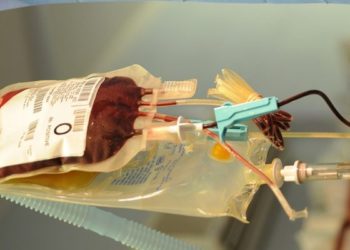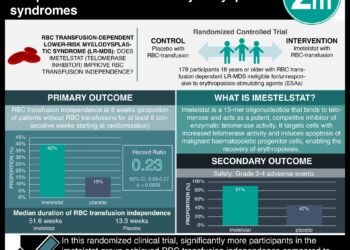No association found between length of storage for transfused red blood cells and patient mortality
1. No significant differences in mortality were observed when comparing patients that received fresh versus stored blood.
2. Findings indicate that the current practice of storing RBCs for up to 42 days does not need to be changed.
Evidence Rating Level: 2 (Good)
Study Rundown: The storage of red blood cells (RBCs) has recently received significant attention. During storage, RBCs undergo physiological changes that may or may not be clinically significant. Some observational studies have suggested that the duration of RBC storage is associated with adverse outcomes in patients, including mortalities, while others find no association. Considering these discrepancies, the authors of this study aimed to perform a large, updated binational cohort study with more recent data to investigate the relationship between RBC storage and patient mortality. In general, the study did not find an association between length of storage of transfused RBCs and patient mortality. As the study was observational, the main limitation was the possibility that allocation of exposure was somehow related to patient prognosis. This would occur if fresh blood units were preferentially used for certain patient groups. Overall, this study is the largest observational study to assess RBC storage length and mortality in patients receiving transfusions. The results suggest that the current practice of RBC storage does not need to be changed.
Click to read the study in the Annals of Internal Medicine
Relevant Reading: Relationship between red cell storage duration and outcomes in adults receiving red cell transfusions: a systematic review
In-Depth [retrospective cohort]: In this retrospective cohort study, patients were selected from the Scandinavian Donations and Transfusions (SCANDAT2) database. In total, 854 862 patients met the inclusion criteria during the study period. Using a Cox regression analysis of 30-day and 1-year mortality, the authors compared patients who received RBC units stored for different durations (0-9d, 10-19d, 20-29d, and 30-42d). Overall, no association was found between RBC storage and risk for death. Specifically, with 30 days and 1 year of follow up, the HR of death in recipients of units stored for 30-42 days was 0.99 (95%CI, 0.95 to 1.02) and 1.00 (CI, 0.98 to 1.02) respectively, compared to recipients of units stored for 10 to 19 days. Furthermore, mortality rates were similar in RhD negative and-positive patients with blood groups A and O at both 30- days and 1-year follow-up.
Image: CC/Wiki
©2016 2 Minute Medicine, Inc. All rights reserved. No works may be reproduced without expressed written consent from 2 Minute Medicine, Inc. Inquire about licensing here. No article should be construed as medical advice and is not intended as such by the authors or by 2 Minute Medicine, Inc.





